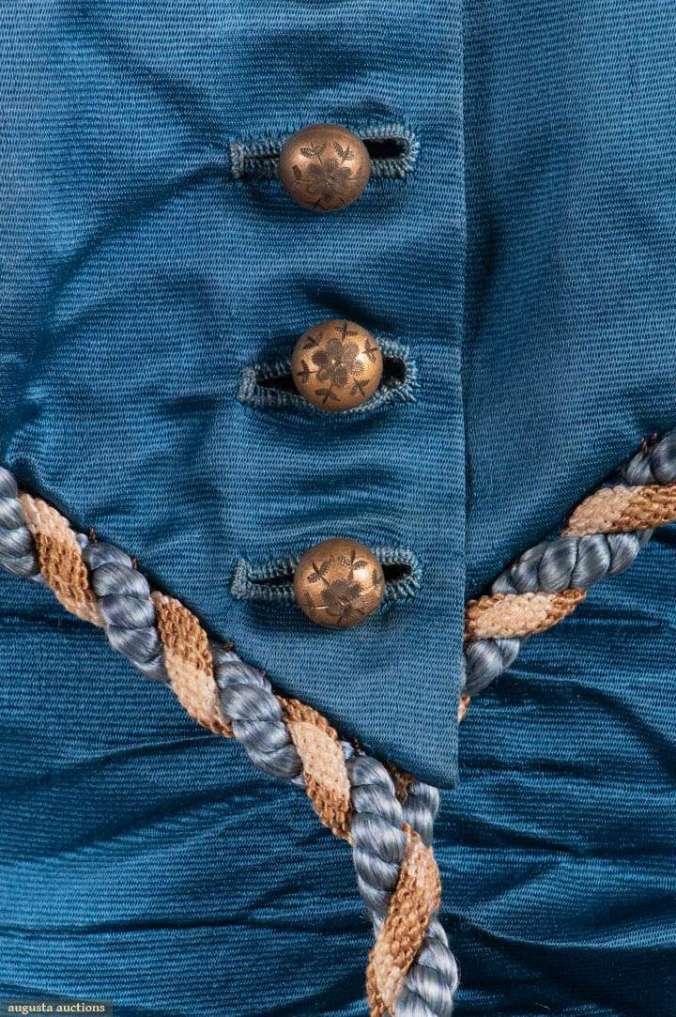
When it came to the media, Charles Worth was very reticent about discussing the details of his highly successful couture business. However, with his sons Gaston and Jean increasingly taking over the daily operations of Maison Worth, this attitude began to change and during the 1890s, one increasingly sees Worth designs being featured in the fashion press. One example of this can be found with the March 17, 1894 issue of Harper’s Bazar where a Worth evening dress is featured:

This dress is described in Harper’s thusly:
This superb gown is of very light ciel-blue satin bordered with black fur. It is further enriched with bead embroidery in iris dc~igns. The pointed waist is draped across the bust. and has a jabot falling between branches of embroidery done on the satin. Fur shoulder-straps complete the square décolleté. Short puffed sleeves of dotted mousseline de soie are under a ruffle of beaded satin. The graceful skirt falls in godet pleats, and is trimmed with embroidery and fur. The coiffure is without any ornament, a looped tress at the back extending above the top of the head giving a pretty profile. The fan is of black lace figures appliqued on tulle.
The silhouette is standard mid-1890s and interesting enough, the skirt gores are referred to as godets.In modern usage, godets refer to triangular panels set into a skirt to make the skirt flare out more. The only different is that these panels are more inset into the skirt as opposed to being full panels. In terms of skirt style, they are very similar to other Worth dresses of the the 1890s and early 1900s- all employed a graceful train and were constructed of solid silk satin with some sort of long flowing decorative motif, often floral or “sheaf of wheat.” Here’s a few well-known examples that follow in the same vein:

Worth, Ball Gown, 1893 – 1894; Metropolitan Museum of Art (C.I.68.53.10a–c)

Worth, Evening Dress, c. 1901; Bunka Gakuen Costume Museum

Worth, Ball Gown, 1899; Metropolitan Museum of Art (26.381a-b_front 0004)

Worth, Ball Gown, c. 1895 – 1900; Metropolitan Museum of Art (2009.300.1290a, b)

Worth, Ballgown, c. 1894; Kyoto Costume Institute (AC4799 84-9-2AB)


Ballgown, Worth, 1898; Metropolitan Museum of Art (2009.300.1324a, b)
While the skirts are similar, the bodices exhibit a wide range of variation different trim, fabrics, and decorative effects. Also, sleeves for the most part tend to be minimal except for examples from the mid 1890s, which comes as no surprise. 😉 As for the color, ciel blue, here’s an approximation:

The one interesting, and subtle, twist with this dress design is the use of fur as trimming on the skirt hem and shoulders. We wonder if this design was ever actually made or simply was a concept that Jean Worth fed to the fashion press. Someday, we may know the answer.
Become a Patron!
Like this:
Like Loading...
































